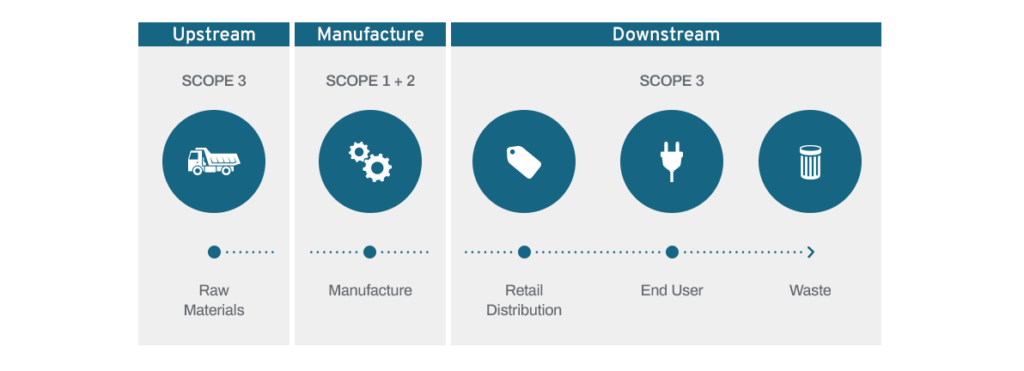Sims provides quarterly reports to our clients, detailing carbon emissions avoided through their current ITAD program. Calculations include assets that have been reused and recycled.
Incorporating ITAD Reporting into Corporate Sustainability Reporting Framework
The Greenhouse Gas Protocol Corporate Accounting and Reporting Standard (Greenhouse Gas Protocol Standard), introduced in 2001, is a framework that enables companies to holistically evaluate their carbon impact. This standard categorizes direct and indirect carbon emissions and was developed by World Business Council for Sustainable Development (WBCSD) and World Resources Institute (WRI).
Carbon emissions are categorized as Scope 1, Scope 2 and Scope 3 emissions:
- Scope 1 emissions result from sources owned or controlled by the company (such as fuel combustion in a vehicle fleet or backup generator).
- Scope 2 emissions result from energy purchased to enable the company’s operations.
- Scope 3 emissions are indirect emissions that arise from the products, goods and services that support the company’s operations. Scope 3 emissions may be upstream or downstream activities in the value chain. Examples include goods and services purchased, leased assets and transportation activities to deliver the company’s products to customers.
When a company manufactures a cloud product such as a server, the emissions generated by that product while it is used (primarily from the electricity it consumes) will form part of the company’s Scope 3 emissions. The emissions from end-of-life treatment of that device may also form a part of the Scope 3 emissions for the company.
Applied to the Linear Economy Model, simplified Scope 1, 2 and 3 emissions categories for an original equipment manufacturer are shown in the diagram below.
